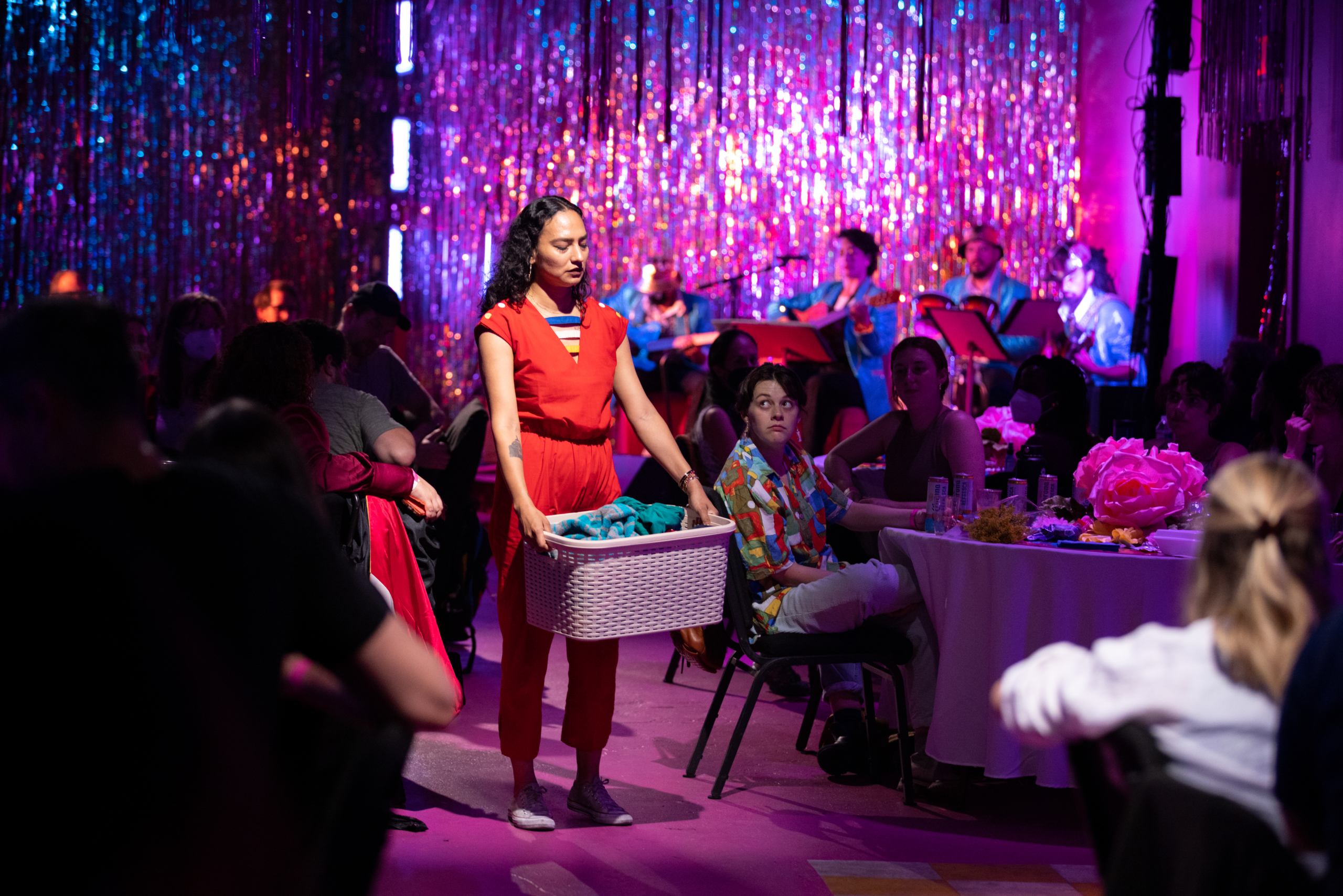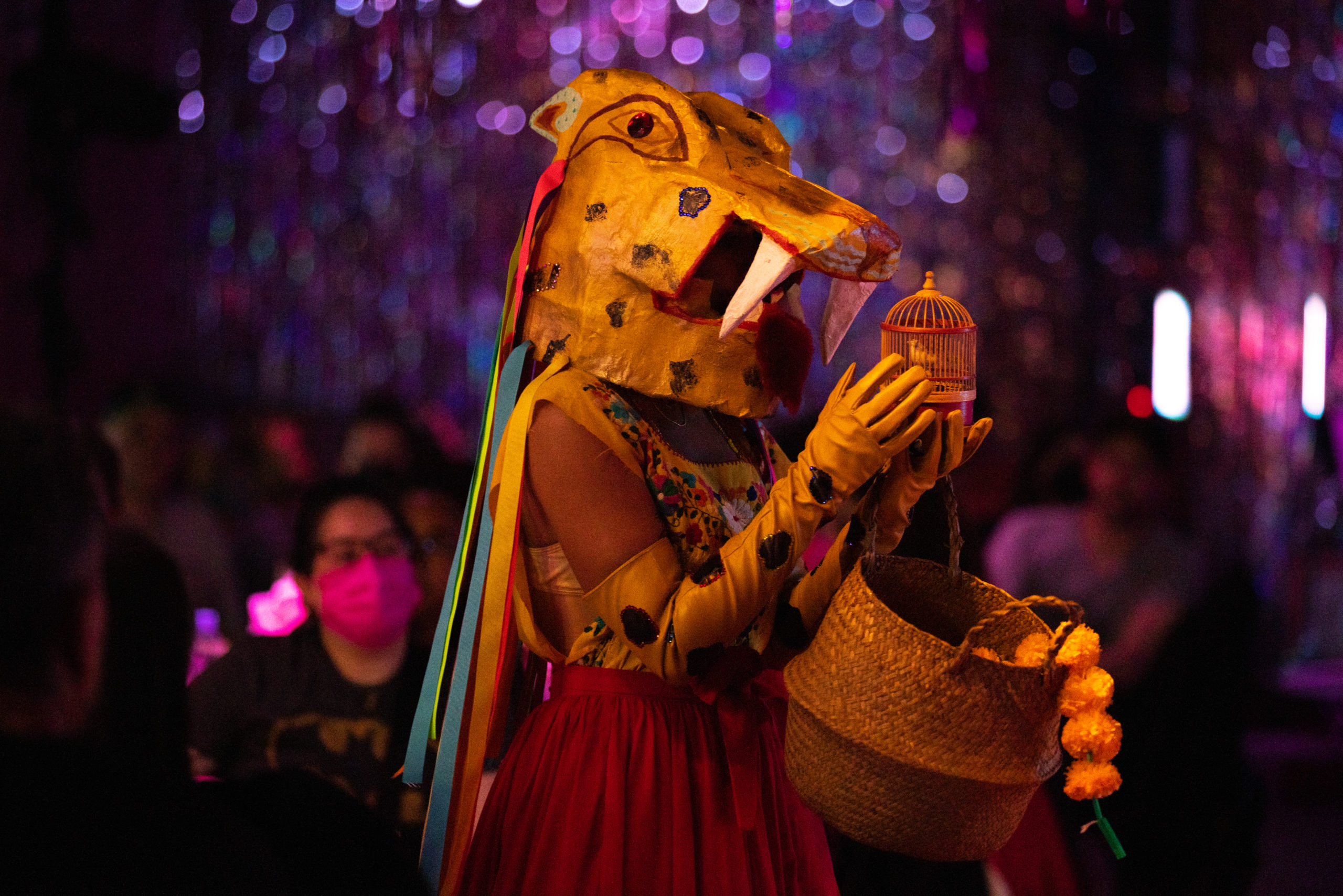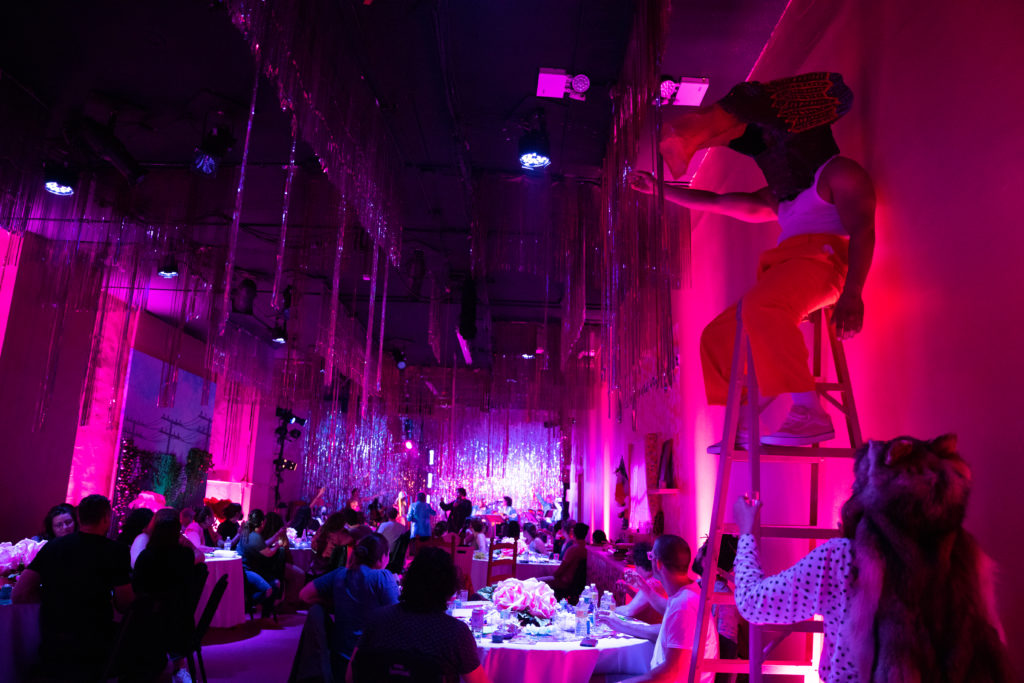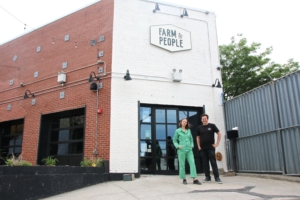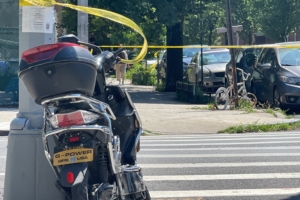Off the Halsey Stop in Bushwick is a warehouse party where sequin-clad women pass out smoky mezcal shots in a room decorated with neon, glitter and flowers bigger than your head. A live band lays down a mischievous mood and strangers come together over tacos before breaking it down on the dancefloor with a ghost. It’s “Quince,” the latest production playing at the Bushwick Starr’s new location on Eldert Street.
Directed by Ellpetha Tsivicos and written by Camilo Quiroz-Vázquez, “Quince,” follows the story of 15 year-old Cindy (Sara Gutierrez) as she confronts her queer identity, family and religion while preparing for her quinceañera. An immersive experience, the show makes great use of the Starr’s new home. Larger and more flexible than their previous set-up, which was married to traditional stage and theater seating, the new space is a blank canvas that allows Vázquez and Tsivicos’ “Quince” to physically transport the audience into the quinceañera. Between the band’s upbeat percussion, the double-shot canned margaritas for sale and the modern, campy take on decor, the immersion succeeds where many immersive experiences fail — despite my own self-serious tendencies, I was dancing, participating and having fun.
The play within the party is less successful. The show has a tone problem—it’s so committed to comedy that the characters (Gutierrez’s Cindy, in particular) come off as cartoonish, living in a Sesame Street-style world where nothing bad could ever happen. Though mentions of violence and historical trauma abound, there don’t seem to be any actual stakes. In the play’s very first scene, for instance, we get a larger-than-life reenactment of how the Mexican government killed Cindy’s rebel great-grandfather. But then he comes back to life because his wife yells at him! Everyone laughs. Throughout the play, we’re meant to believe Cindy is struggling with her sexuality. But she’s a confident girl who doesn’t question herself once, nor is there any serious indication that her family won’t accept her. So there is no struggle, at least that we’re shown. Even when she goes to confession, the priest tells her he supports her and she “just has to be herself.” Gutierrez is a talented comedic newcomer, and puts on a range of Lucille O’Ball-level faces— which unfortunately has the effect of relieving the audience of any tension and the text of any emotional impact. This cartoonish tone works best as play for children, a fantastic learning tool about and celebration of Latin American and LGBT+ culture that would make a valuable field trip for any classroom of 8-18 year-olds. But children’s plays don’t typically hand out mezcal shots.
Furthermore, the play struggles from a lack of plot. It’s a string of monologues about personal history, monologues about how characters feel, and dialogues where characters inform each other exactly how they feel. We are informed that there are problems we don’t see that culminate in a few scenes where characters hug it out and resolve conflicts that never manifested themselves to begin with. The show proves the pitfall of ignoring the classic theater commandment—show don’t tell. You could listen to the play with your eyes closed and not miss a beat. The talking is strung together by some visually arresting magical-realism elements, but the rules about how they operate are confusing and ultimately their theatrical function seems to be allowing characters to have something to monologue at.
There’s a more mature play that wants to come out. Cindy could actually struggle to accept her sexuality amid deeply entrenched teachings of the Catholic church and genuinely wonder whether she will have to leave her family to live her truth or even if she faces damnation. Maria (Brenda Flores, as Cindy’s mother) could express her trauma from becoming pregnant at 15 and having to raise Cindy by herself through action, which could seep through her interactions with her daughter. Salomon (José Pérez)—Cindy’s brother, who experiences intense agoraphobia and paranoia that’s impacted by machismo culture and inherited trauma—could be taken seriously and his problems recognized as the potentially fatal mental illnesses they are. (In the end, Salomon turns into a bird, and what the metaphor represents is up for interpretation.)
Like life, all of this can happen amid levity and joy – sprinkle in the play’s elements of magical realism and you’d have something that could rival Tennessee Williams’ family dramedies.
“Quince” does, however, boast a few true stand-outs. Flores, as Cindy’s mother, is allowed free reign in a moving scene where she dances alone while doing laundry and is transported to the quinceañera she never had as a teen and then talks to the ghost of her mother. Doing this, Flores captivates the room; the short scene provides the emotional weight underpinning for the rest of the 100-minute show. Pérez gives a commanding performance as Salomon, balancing the comedy with more grounded, sensitive moments. And Gutierrez’s physical comedy is masterful, managing to entertain despite some truly confusing lines. The multi-media scene design by Tanya Orellana, and the costume design by Scarlet Moreno, both absolutely steal the show and bring to life the play’s mythical characters. The mask worn by Grandma Carmen, designed by Zoë Andrea Batson, is stunning.
As is, the best way to think of “Quince” is not as a play but as an experience worth having; incredible ambiance, a little dancing, a few laughs and even learning a thing or two. It’s the most fun party in Bushwick.
“Quince” runs from June 2 – 26, Thursdays – Sundays at 8pm. Visit thebushwickstarr.org for tickets.

All images courtesy of One Whale’s Tale.
For more news, sign up for Bushwick Daily’s newsletter.
Join the fight to save local journalism by becoming a paid subscriber
